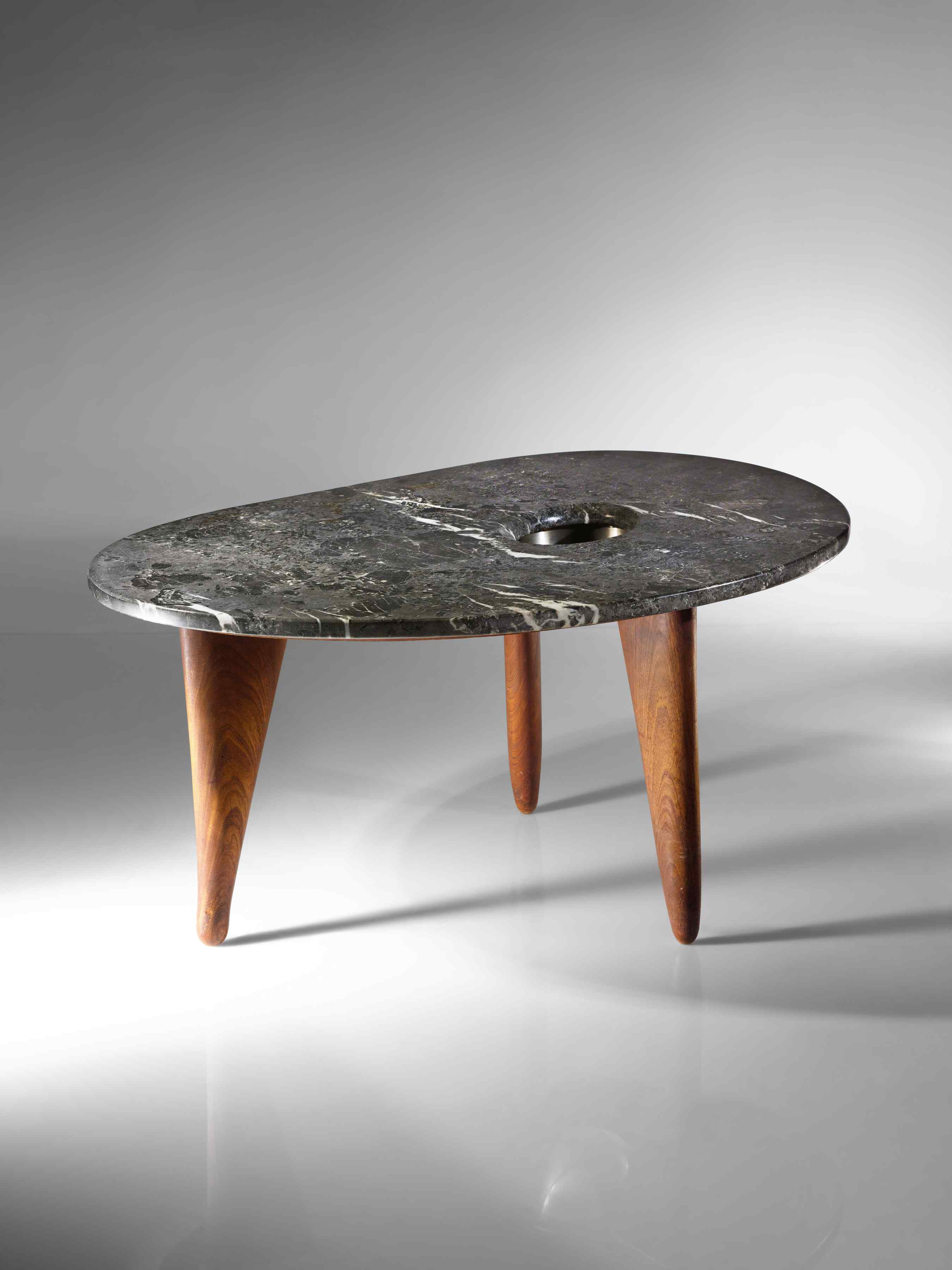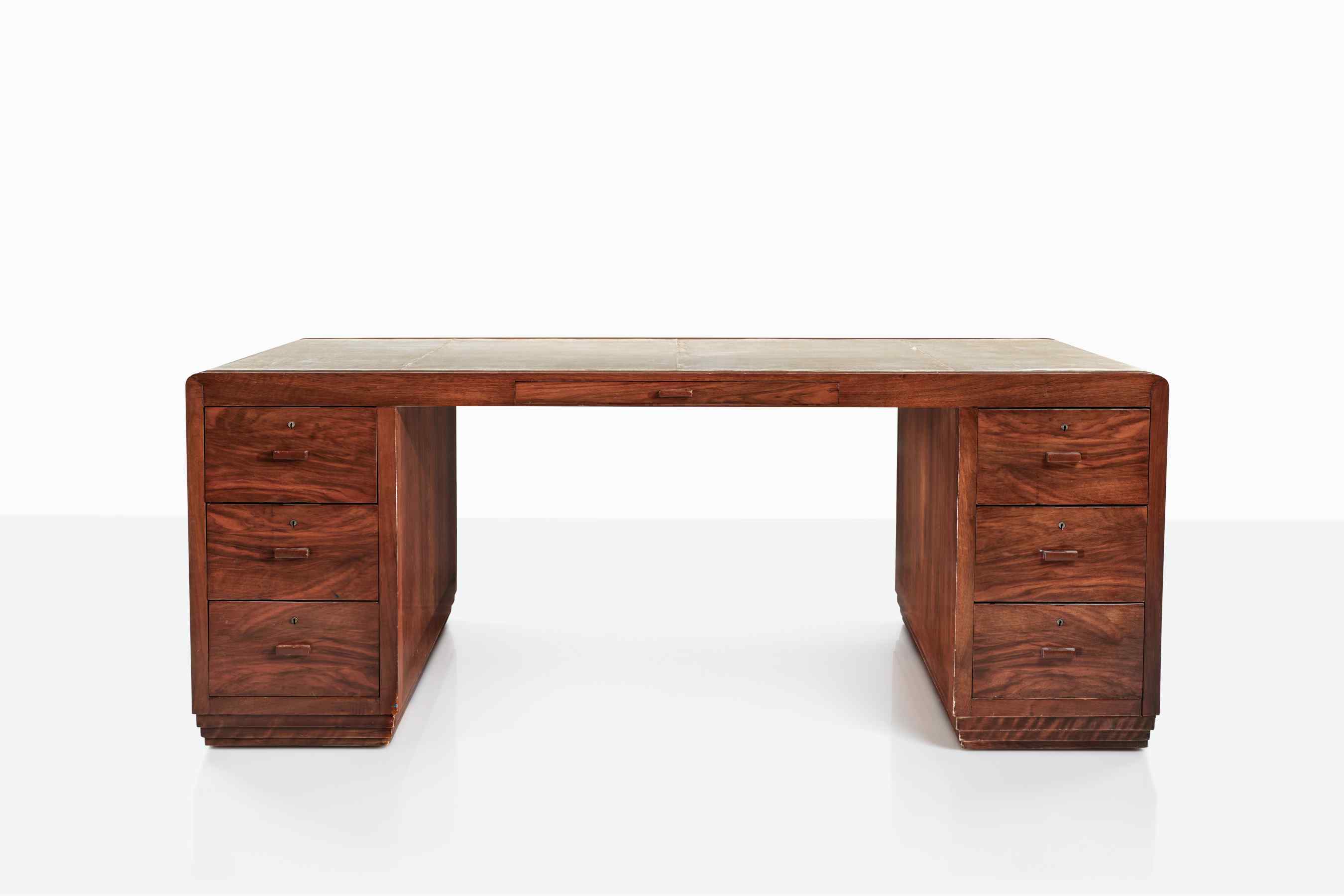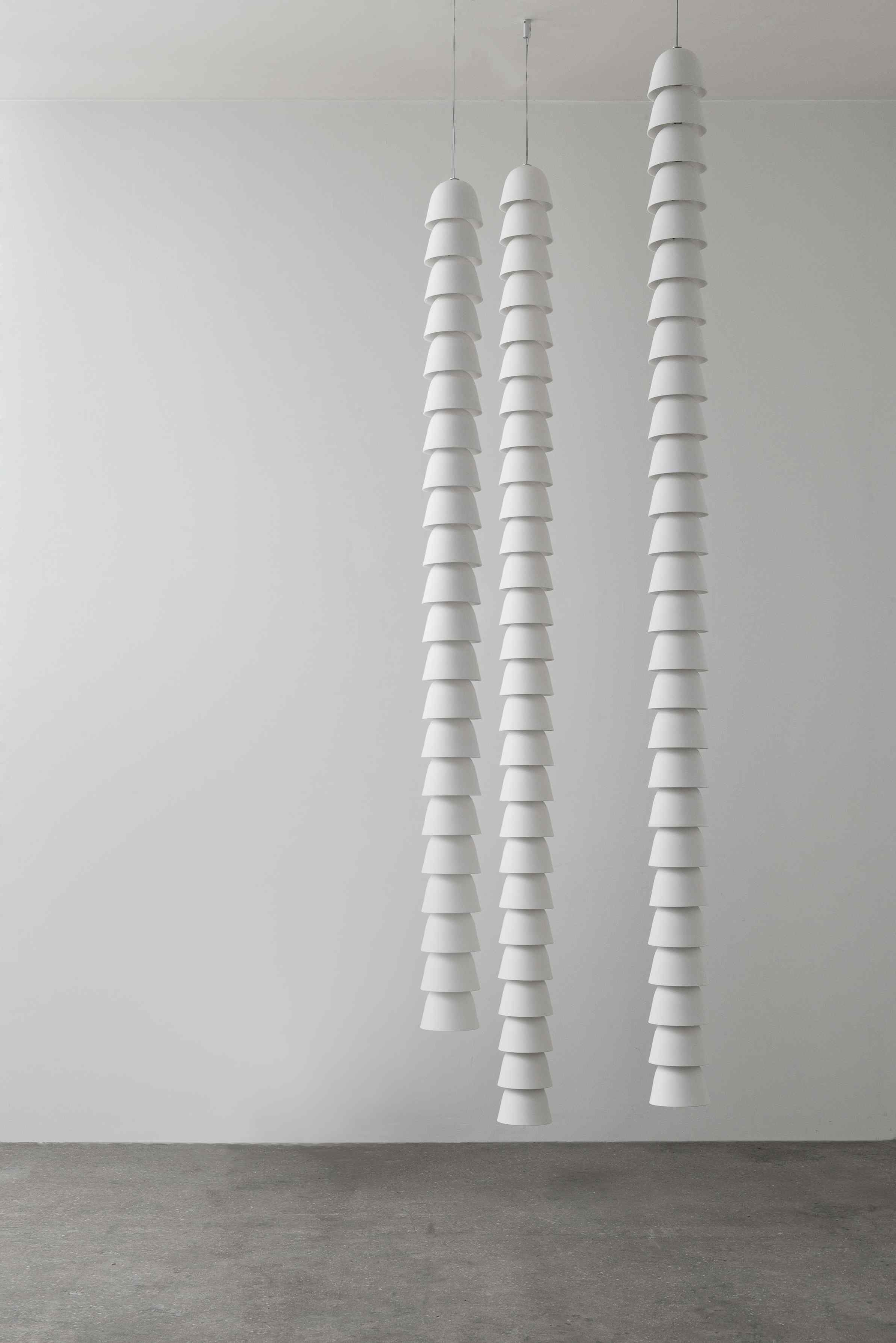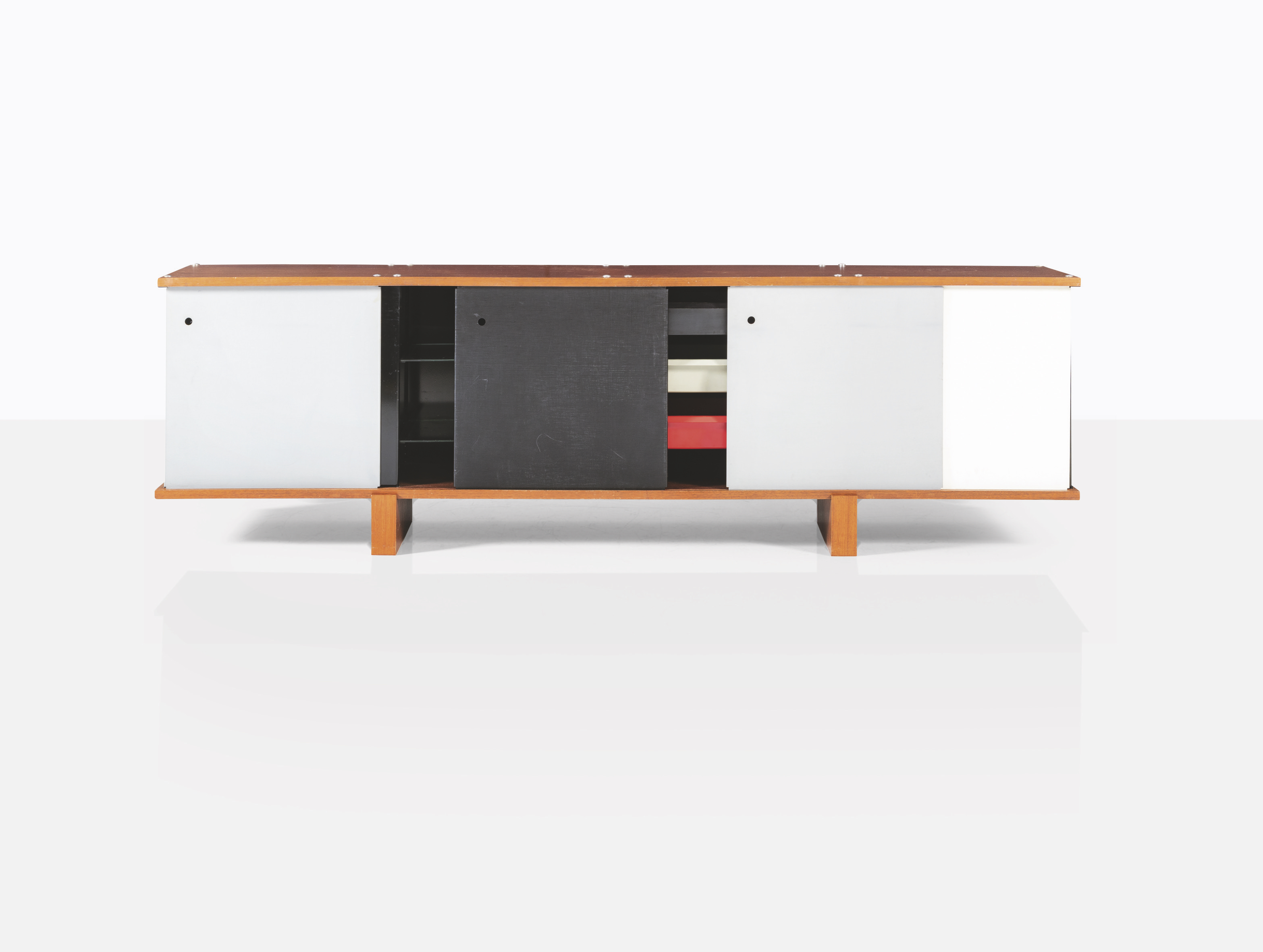Julianne Moore on important design
Sotheby's presents a conversation on design, featuring actor and collector Julianne Moore in conversation with curator Glenn Adamson, on the occasion of its ‘Important Design’ sales in Paris and New York (25-26 May 2021) featuring works from the 20th and 21st century

Academy Award- and Emmy-winning actor Julianne Moore is an avid design collector. Her passion for design, she explains, started in her youth, when she was first exposed to Isamu Noguchi's ‘Akari’ lamps. ‘As a person in their early twenties who was trying to learn about design, I would go to design stores and museums, and that's where you would find a little “Akari” lamp that you could afford,’ she says. ‘There I was, interested in these objects and I found some beautiful lights, textured sculptural pieces that I could afford to put in my living room. That led me to learning more about Isamu Noguchi, learning more about life and sculptures and his contributions to art and design. I was absolutely fascinated.’
On the occasion of Sotheby’s auction ‘Important Design: from Noguchi to Lalanne’, Moore was invited to discuss her favourite designers and furniture pieces, how she got to appreciate and learn about design, and how she chooses the furniture for her home as a collector. Talking alongside curator Glenn Adamson – and with historical insights from Dakin Hart, curator of the Noguchi Museum in New York; gallerist Jean-Gabriel Mitterrand; and Florent Jeanniard, Sotheby’s vice president France and head of 20th-century design – the talk covered design classics such as Noguchi's lamps and his spatial design, François-Xavier and Claude Lalanne's zoomorphic pieces, as well as Alberto Giacometti and Jean-Michel Frank pieces from the sale. Here, we share some of the highlights from the conversation.
Julianne Moore: learning about design as a lifelong process

An Isamu Noguchi table from 1945-47
‘I'm somebody who's very self-educated in design,’ says Julianne Moore. ‘I learned by going to galleries and talking to people and people being very generous and teaching me, and so I learned to just respond to what I liked.’
Moore's first encounter with Noguchi kickstarted a life-long passion for design. She notes that many of the designers and artists mentioned during the design conversation with Sotheby's were ‘interested in reaching everybody and… had a theory that the design was to make everyone's life better: and I think there's no better example of that than Noguchi’.
‘That’s one of the things that design does: it puts you in touch with a maker and with a philosophy’
Julianne Moore
A Noguchi highlight from the sale is a rare table from 1945-47, one of three examples that were hand-sculpted by the designer in marble and mahogany with an embedded aluminum bowl. A ‘table-not-table’, as Adamson describes it, the piece, like most of Noguchi’s work, ‘defeats categorisation, combining the quotidian with the handmade and doing so in a way that made it accessible’.
When discussing the table, Moore says she particularly likes ‘the idea that you can have something like that in your home with such extraordinary materiality, [made by] someone who is so in touch with the natural world and brought the natural world into your house in this table, that is also a sculpture.
‘[These objects] put you in a direct conversation with this individual,’ she continues. ‘That's one of the things that design does: it puts you in touch with that maker and with that philosophy.’
Wallpaper* Newsletter
Receive our daily digest of inspiration, escapism and design stories from around the world direct to your inbox.
Sotheby's ‘Important Design’ New York sale: highlights from Alberto Giacometti and Jean-Michel Frank

Moore’s highlights from the sale’s catalogues include a 1930s desk by Jean-Michel Frank, a fine example of art deco furniture made of rosewood with a calfskin top. To explain the designer and maker’s brilliance, she recalls a popular anecdote about Frank, dating back to the beginning of his career when, allegedly, French writer Jean Cocteau visited his Paris apartment and, looking at the sparse interiors, wondered if the young man had been robbed. ‘He was so revolutionary: he came on the scene at a time where things had been very ornamental,’ says Moore. ‘And suddenly he was doing this stuff where everything was very spare and elemental and stripped away and simple... I'll go back and look at photographs of those interiors and just marvel at his eye and sense of proportion. And I think this desk is absolutely perfect.’
Another highlight from the New York auction is a pair of Alberto Giacometti ‘Étoile’ table lamps, designed in the 1930s and executed by the designer after 1966 in patinated bronze. ‘For me, lamps are challenging: these objects that you need,’ observes Moore, while discussing the pieces with Adamson. ‘There’s a sense of simplicity and beauty [in these pieces; they have] a sense of timelessness: I realise that a lot of things I respond to, I don't want to be able to place them in a particular moment in time. And in a way, when you assemble a collection from different time periods, if you have that sense of timelessness, there's a wonderful continuity.’
Julianne Moore on living with design at home

‘Chaînes Mineral Triple’ by Ronan and Erwan Bouroullec, 2016
Moore’s passion for design has led her to acquire collectible pieces over the years, and to pay special attention to the furniture and design in her New York home. Notable furniture in her eclectic collection includes works by Charlotte Perriand, Carl Auböck, Achille Castiglioni and George Nakashima, as well as pieces by contemporary designers, among them a pair of Mario Bellini ‘Le Bambole’ sofas for B&B Italia, Dieter Rams’ shelving units for Vitsoe, and Alma Allen sculptures, along with several of Noguchi's ‘Akari’ lamps.
‘When you assemble a collection from different time periods, if you have that sense of timelessness, there's a wonderful continuity’
Julianne Moore
‘The Nakashima coffee table in my living room was the first major piece of furniture that I ever bought, and I was attracted to it because of its materiality,’ says Moore. ‘I like a certain materiality, a feeling of patina. I like some personality but I don't like it to be overwhelming – I couldn’t deal with Memphis, that was too much personality for me,’ she laughs. ‘I respond to pieces that have a wonderful shape, a sculptural quality. I like Charlotte Perriand and Pierre Jeanneret and the Bouroullec brothers, Paavo Tynell and Nanna Ditzel: these are people I felt were doing such interesting work in terms of their craftsmanship and the materials that they worked with. And I feel like I learned more all the time and I learned so much from gallerists and dealers who were showing these pieces and educating me about them.’
On furniture and film

Charlotte Perriand, ‘Bahut’, circa 1958. ‘I’m always interested in who these people were, what their philosophies were. Perriand’s whole history is really fascinating. You do get drawn to the people as well as the objects,’ comments Moore
When asked about what Adamson refers to as ‘the prop-like quality of great design’, and whether film sets have made her look at design in different ways, Moore says: ‘A great film designer is designing for [a] particular character. As an actor, clothes and objects around us are signifiers, they're telling the world who we are. So a great set designer is thinking first and foremost about those people: the characters that live in that house and how they are signifying themselves. It's a weird meta process: that's where you get that idea that these objects actually have meaning, and they have personality.’
‘As an actor, clothes and objects around us are signifiers, they're telling the world who we are'
Julianne Moore
Moore also describes the process of acquiring design pieces as something like an emotional journey. ‘I like the idea that that a house is layered: sometimes I look at some of the stuff that I've acquired, and I'm like, what was I thinking when I got that, that's terrible,’ she says. ‘But I appreciate the fact that the 27-year-old me acquired that piece and has hung on to it, and that the older me has [bought] something else. I don't think I would ever want to be all one thing.’
INFORMATION
‘Important Design’, on view by appointment, Sotheby’s New York, from 21-24 May 2021. Auction, 25 May 2021 10am EDT
ADDRESS
Sotheby's
1334 York Ave
New York
NY 10021
Rosa Bertoli was born in Udine, Italy, and now lives in London. Since 2014, she has been the Design Editor of Wallpaper*, where she oversees design content for the print and online editions, as well as special editorial projects. Through her role at Wallpaper*, she has written extensively about all areas of design. Rosa has been speaker and moderator for various design talks and conferences including London Craft Week, Maison & Objet, The Italian Cultural Institute (London), Clippings, Zaha Hadid Design, Kartell and Frieze Art Fair. Rosa has been on judging panels for the Chart Architecture Award, the Dutch Design Awards and the DesignGuild Marks. She has written for numerous English and Italian language publications, and worked as a content and communication consultant for fashion and design brands.
-
 All-In is the Paris-based label making full-force fashion for main character dressing
All-In is the Paris-based label making full-force fashion for main character dressingPart of our monthly Uprising series, Wallpaper* meets Benjamin Barron and Bror August Vestbø of All-In, the LVMH Prize-nominated label which bases its collections on a riotous cast of characters – real and imagined
By Orla Brennan
-
 Maserati joins forces with Giorgetti for a turbo-charged relationship
Maserati joins forces with Giorgetti for a turbo-charged relationshipAnnouncing their marriage during Milan Design Week, the brands unveiled a collection, a car and a long term commitment
By Hugo Macdonald
-
 Through an innovative new training program, Poltrona Frau aims to safeguard Italian craft
Through an innovative new training program, Poltrona Frau aims to safeguard Italian craftThe heritage furniture manufacturer is training a new generation of leather artisans
By Cristina Kiran Piotti